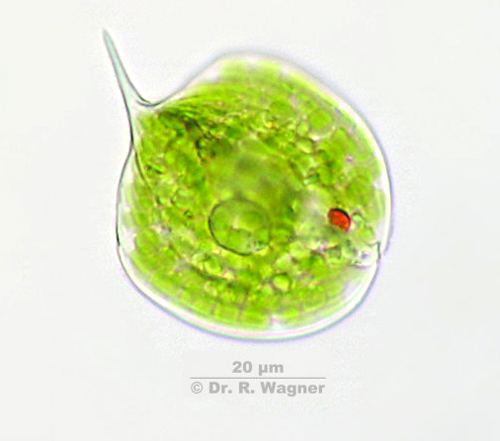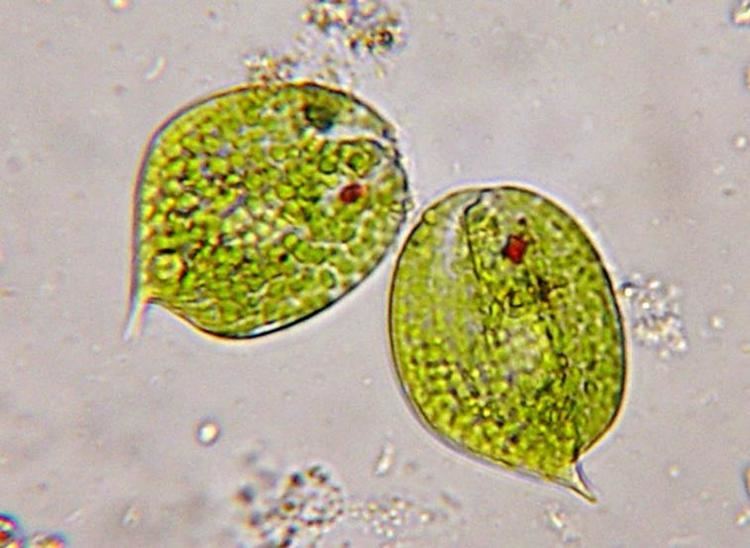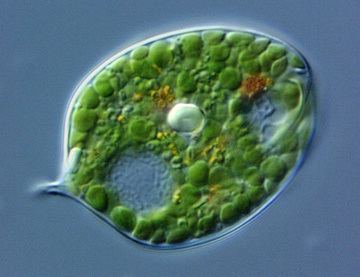Domain Eukaryota Order Euglenales Scientific name Phacus | Family Euglenaceae Higher classification Euglenaceae | |
 | ||
Similar Trachelomonas, Euglenophyceae, Euglenoids, Lepocinclis, Euglena viridis | ||
Phacus longicauda
Phacus is a genus of unicellular protists, of the phylum Euglenozoa (also known as Euglenophyta). They are light-green and are commonly found in freshwater pools, propelling themselves by gyrating their bodies. They have a single flagellum which is often as long as the Phacus' body. Euglenid, with plastids, rigid, flattened cells, most species very flat and leaf-shaped, often with ridges, folds or grooves running helically or longitudinally, giving an irregular or triradiate cross-section; many species with a long posterior spine, many twisted, flagella, eyespot and flagellar swelling as in Euglena; chloroplasts usually small, discoid, numerous, without pyrenoids; a few species (e.g. P. splendens) have large flat chloroplasts with pyrenoids; paramylon is typically deposited as a few large granules (often rings) together with many small ones; canal opening subapical; no cysts palmelloid stages rare; speciose, contemporary studies indicate that the genus is not monophyletic or holophyletic; type species: P. longicauda (Ehrenberg, 1833) Dujardin, 1841.. Species under the genus include Phacus brevisulca, Phacus claviformis, Phacus hordeiformis, Phacus longisulca, Phacus minimus, Phacus paraorbicularis, Phacus orbicularis and Phacus viridioryza.




